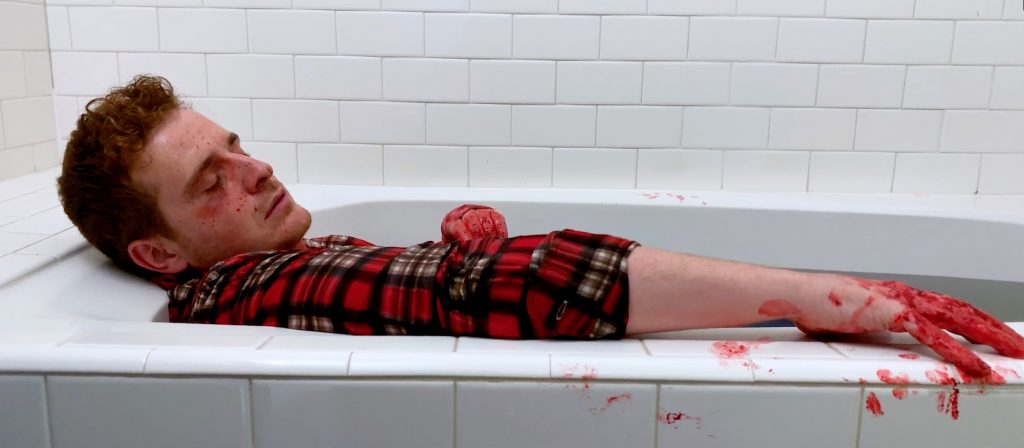Drones are amazing.
What seemed like magic only five years ago—an affordable, flying, radio-controlled camera—is now available to all film-makers on any budget.
Yes, there are drones costing tens of thousands of dollars, which carry cinema-grade cameras on big productions. But with careful planning and a basic consumer-grade drone, filmmakers can add huge amounts of creativity, production value and quality storytelling to even their most modest productions.
Storytelling
So much of storytelling is about point of view. A good drone shot can add a unique angle to any genre of film in a variety of ways.
First, a high drone shot can quickly establish geography and subject position even in the most obscured or encumbered ground where a traditional shot may not be feasible and where a dolly/track or crane shot may be difficult to pull off.
When it is important that the audience understands the relationships between several subjects in the film, a drone shot can efficiently establish those connections, allowing your story to swiftly progress.
Secondly, drone shots can strengthen your creative intent, adding emotional heft and underscoring the old adage “show don’t tell.” This works in every genre:
- Wedding Film; An epic end shot pulling up and away, placing the happy couple below an incredible sunset.
- Documentary: A lonely moment of isolation for the subject of a documentary walking through a park or wasteland—the lonely landscape reflecting the person’s inner feelings.
- War Movie: A group of soldiers approaching a thicket of woodland, unaware of what the audience sees—the encampment of an enemy force.
Whatever the genre, drones can allow for an unencumbered view of your film’s world: from peering voyeuristically into a garden party to soaring high above mountains emulating a bird of prey and providing insight into its point-of-view.
Production value
In a commercial environment you sometimes need that eye-catching “wow factor” to convince a potential client that you are the correct person for the project. If narrative fiction or documentary is your field, a stunning drone shot will add value to your production and get those all-important festival programmers, acquisition executives, or online audiences to sit-up and take notice of your film, giving it an edge over the competition.
But don’t forget, like any tool it is easy to get carried away with the opportunities it presents. So use drone shots wisely and in moderation to keep that impact alive.
Unusual Point-of-View
Like any choice of shot or lens, the aerial shot can add meaning and emphasis to your content.
This applies equally to the literal positioning of the camera as well as the use of a drone to represent the actual POV of a subject in the film.
For a camera position, a drone shot presents the audience with a particularly striking perspective from which to experience your film, forcing the viewer to think about the meaning of not only the content of the shot, but also the choice of angle and pacing.
Drifting drone shots can convey loneliness, isolation and detachment or, conversely, openness, potential, nature and peace. The way they are conveyed is defined by context; what precedes and follows your drone shot will influence and be influenced by its meaning.
So think carefully about the power of a particular shot and how it affects the next shot, scene and sequence.
A fascinating use of this unusual angle is the work of New Zealand-based photographer Tim Whittaker, whose use of a drone to capture the movements of sheep being herded in fields created memorable results.
The distance of the camera reduces the sheep and sheepdogs to a mass of moving, swirling, grouping specks and creates a sequence that is more akin to an art film than a video of rural farming. The camera position has changed your perception of the subject.
The use of a drone can be particularly effective when it is representing a subject’s actual POV. 2015’s Jurassic World used drones to great effect by representing the POV of a group of winged dinosaurs swooping over the heads of panicked people:
The dynamic movement, scale and geography of the running crowd make this sequence memorable and firmly put the audience in the seat of the hunter for those couple of seconds. The action then shifts perspective to the ground and we are back in the POV of the hunted.
A final word on safety
Drones are spectacular, readily accessible and great fun. But they must be used safely and within the guidelines of the law of the country you are in.
Many countries require a license for drones and that they are registered with the relevant authorities responsible for civil aviation.
Before using any drone on a production, ALWAYS ensure you have the relevant training, licenses, registration and insurances.
If you’re a novice but still want that important drone shot, you may find it is easier to ask someone who owns and operates a drone to help you rather than to try and navigate this yourself.
So there are three great reasons to use drones in your productions – whatever the genre!
Carefully conceived, planned and executed, a good drone shot can greatly add to your films and should be considered whatever your budget.
Rob Holder is the Director of Fable Studios, a video production agency in Bristol, UK.



 Previous post
Previous post
 Next post
Next post





